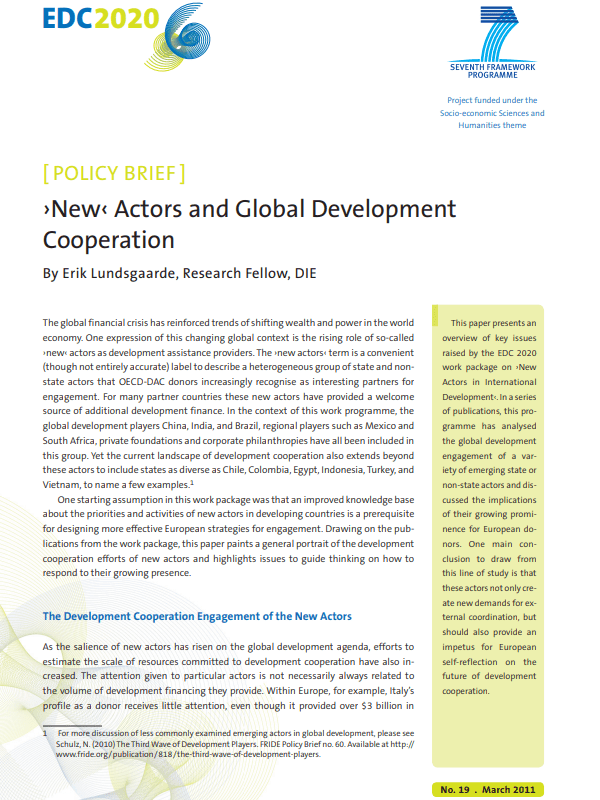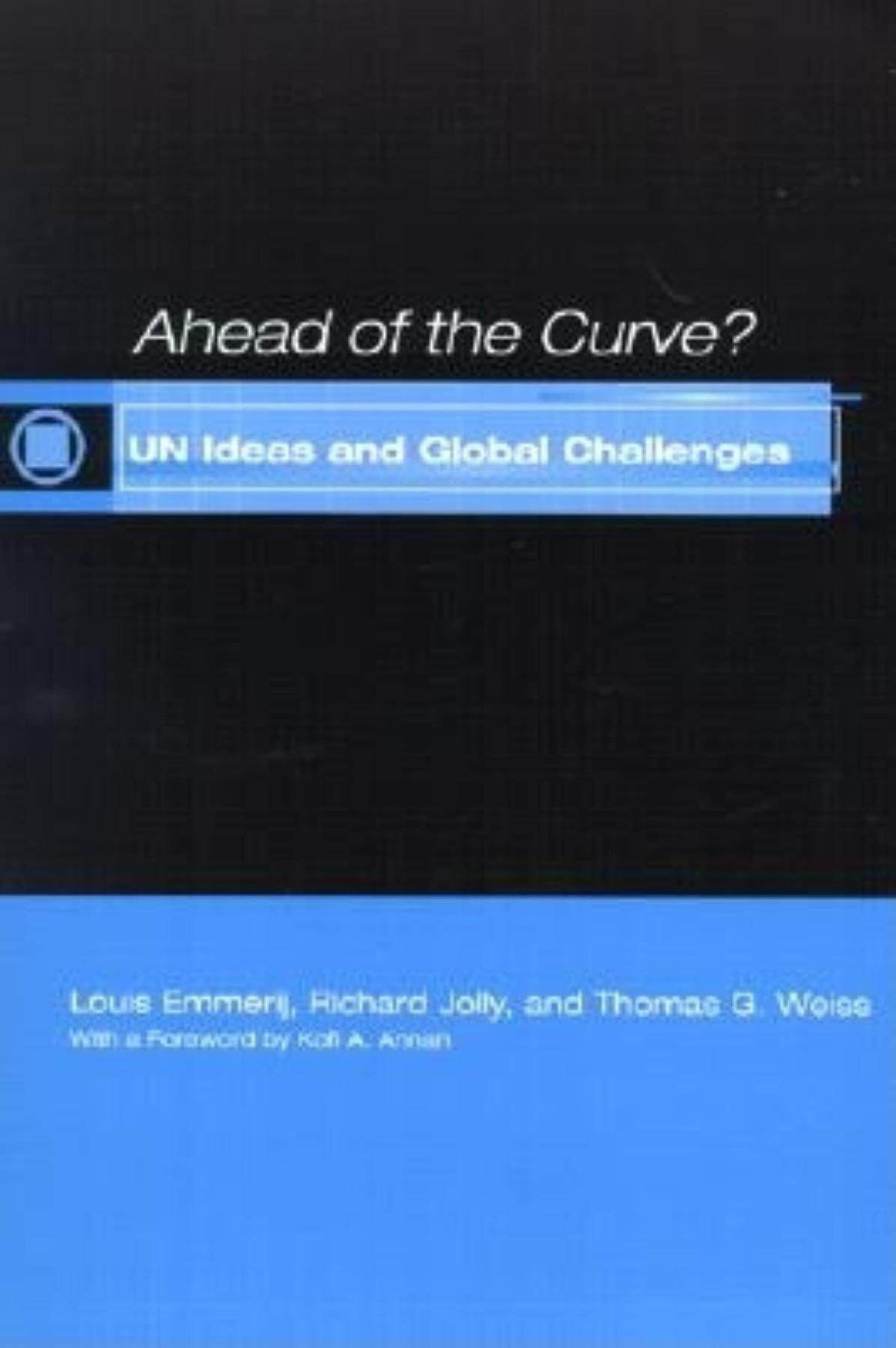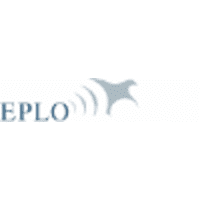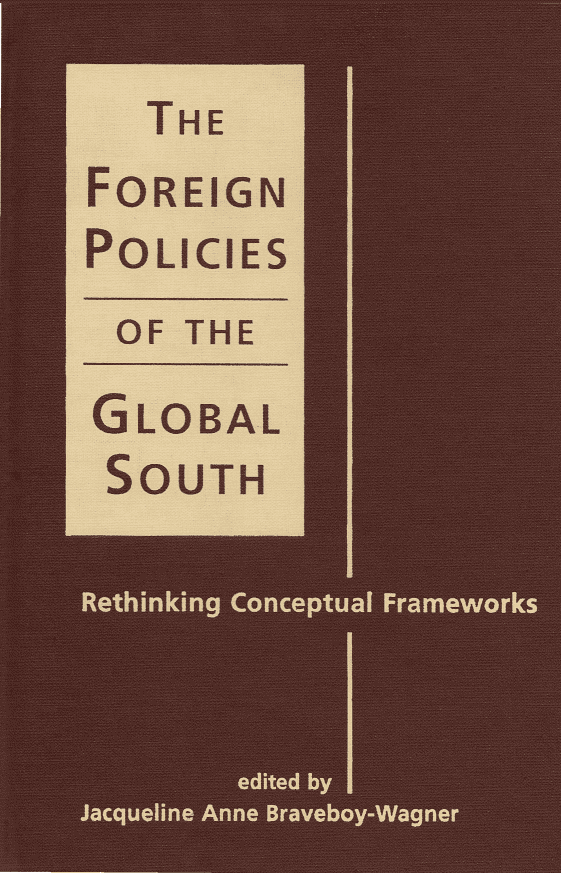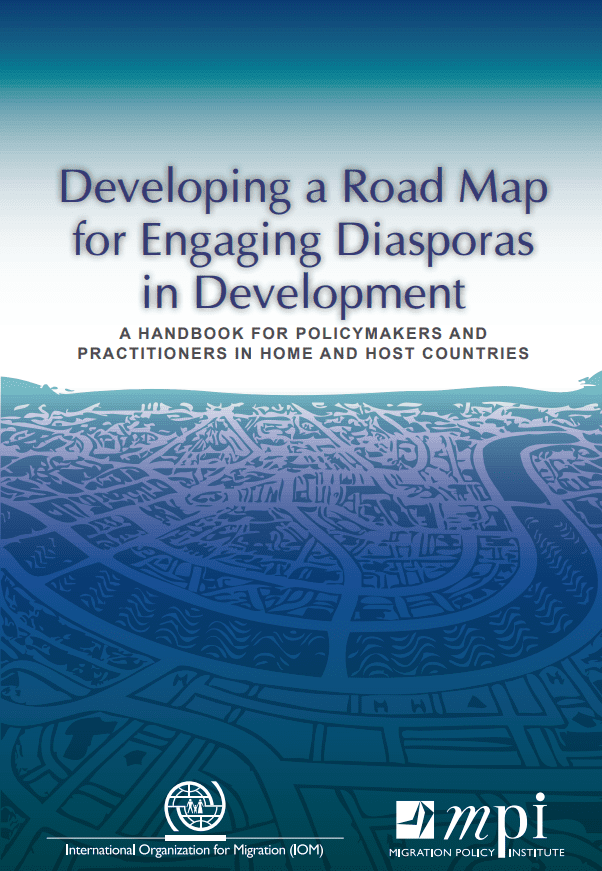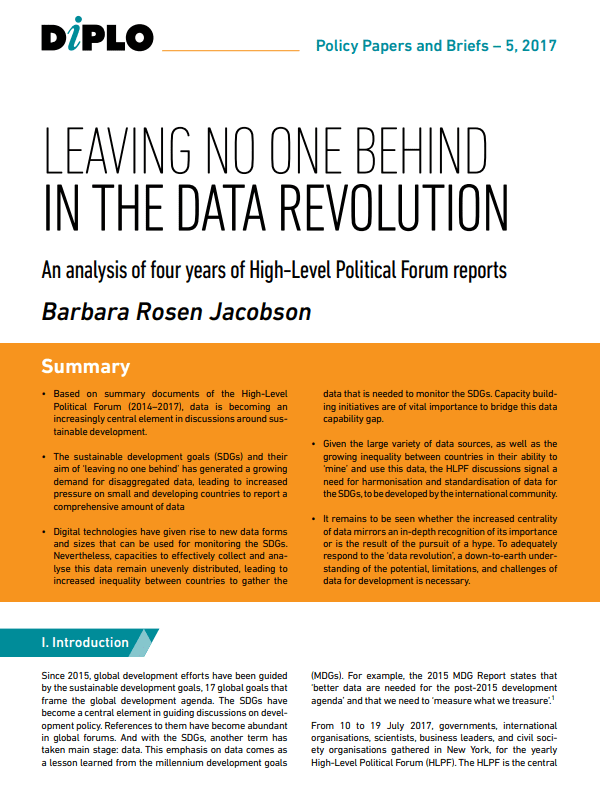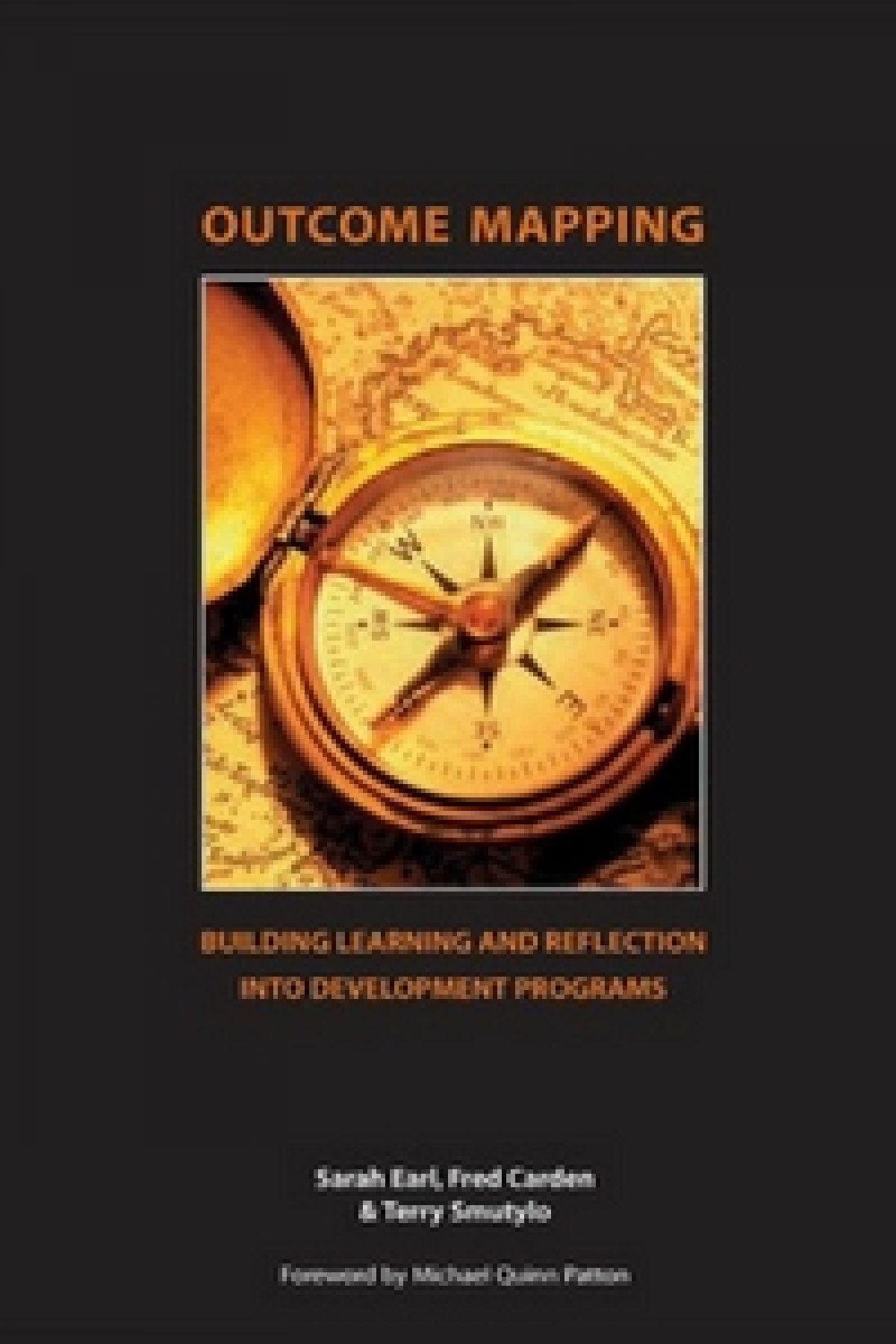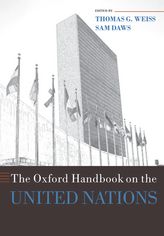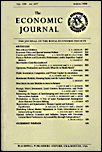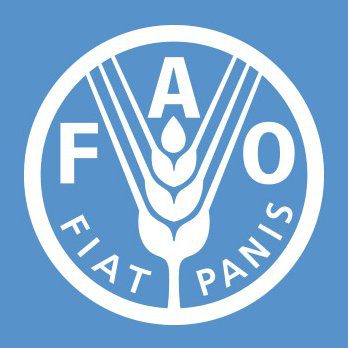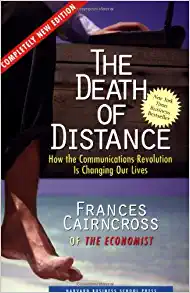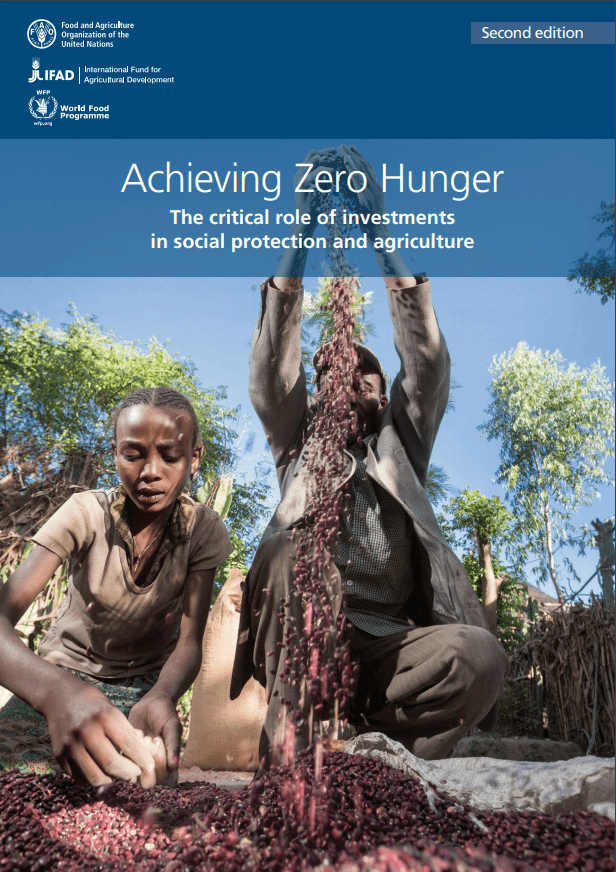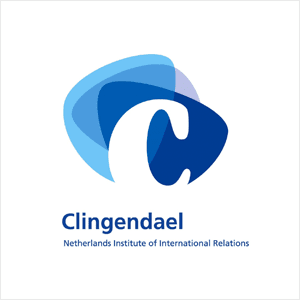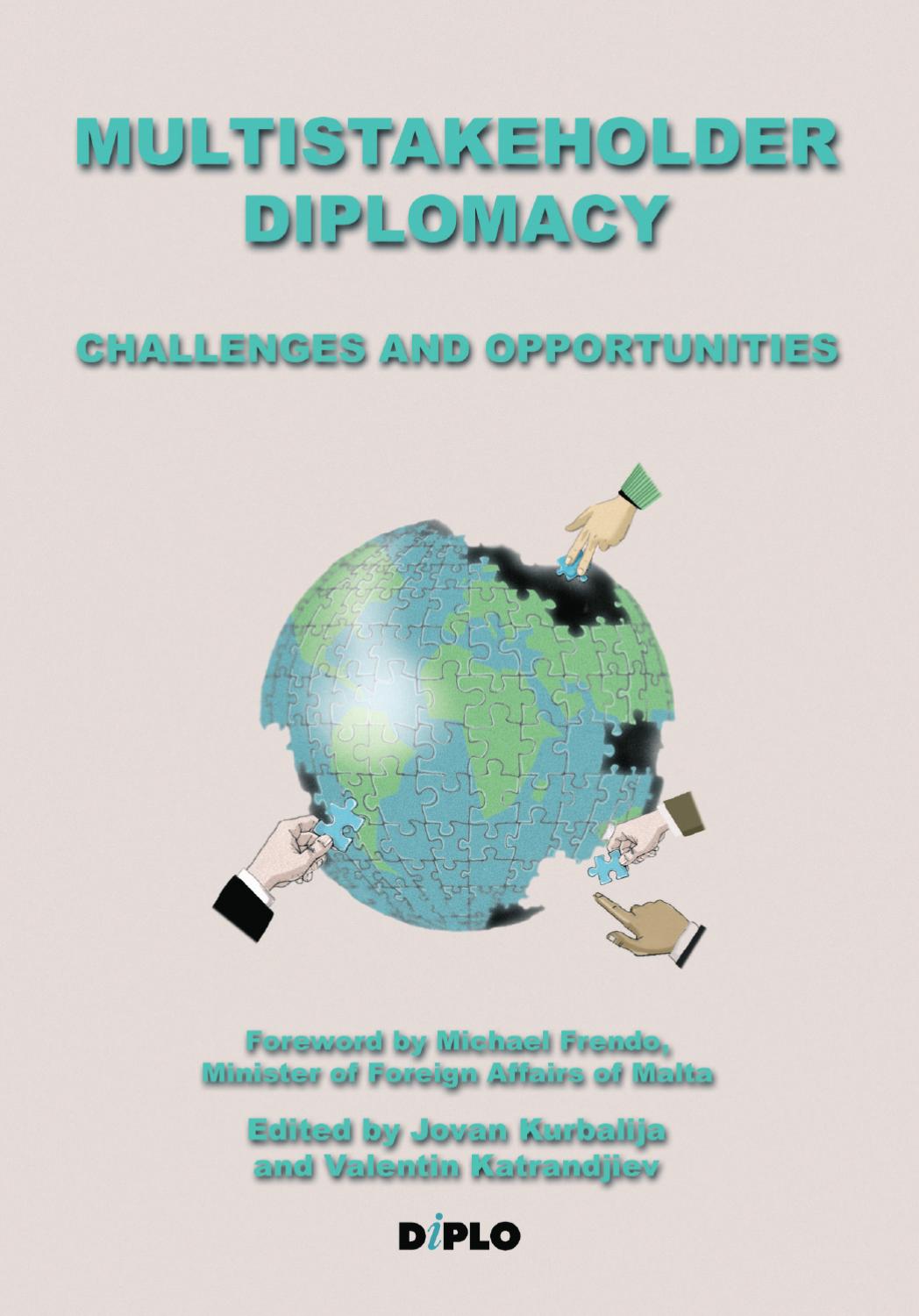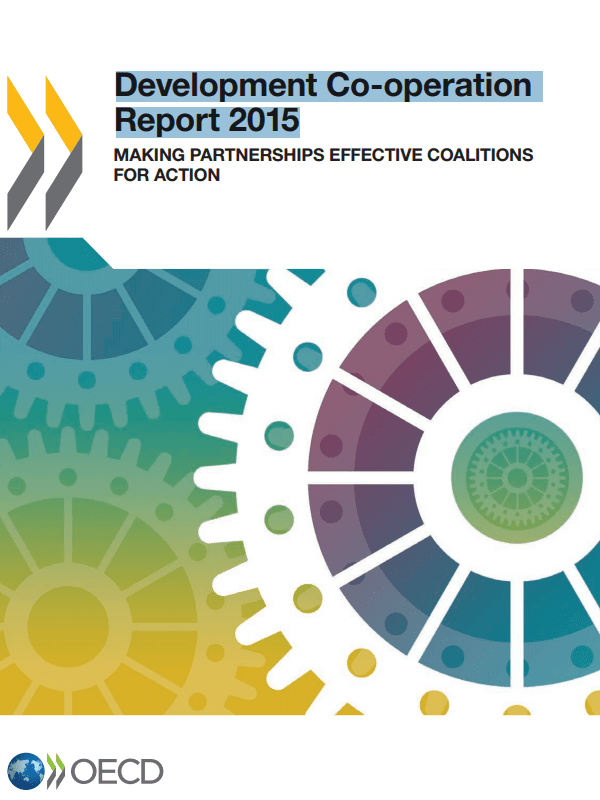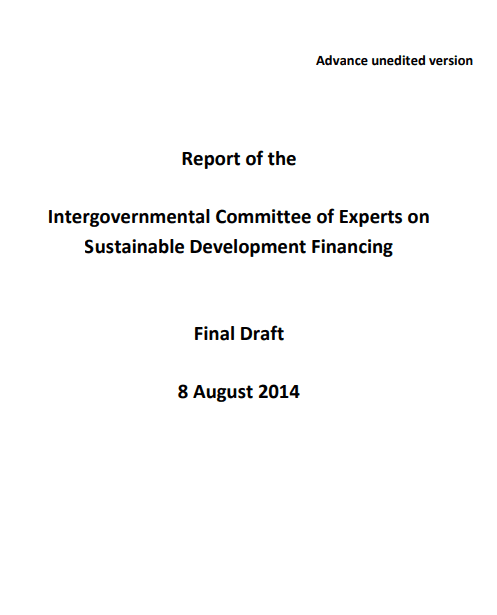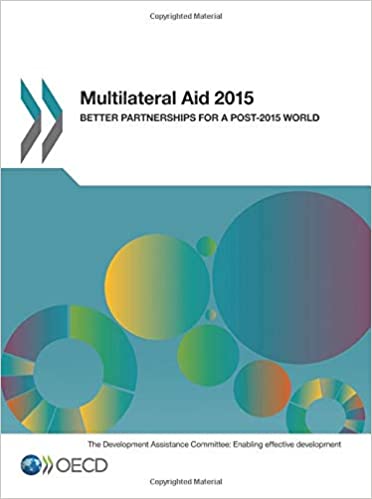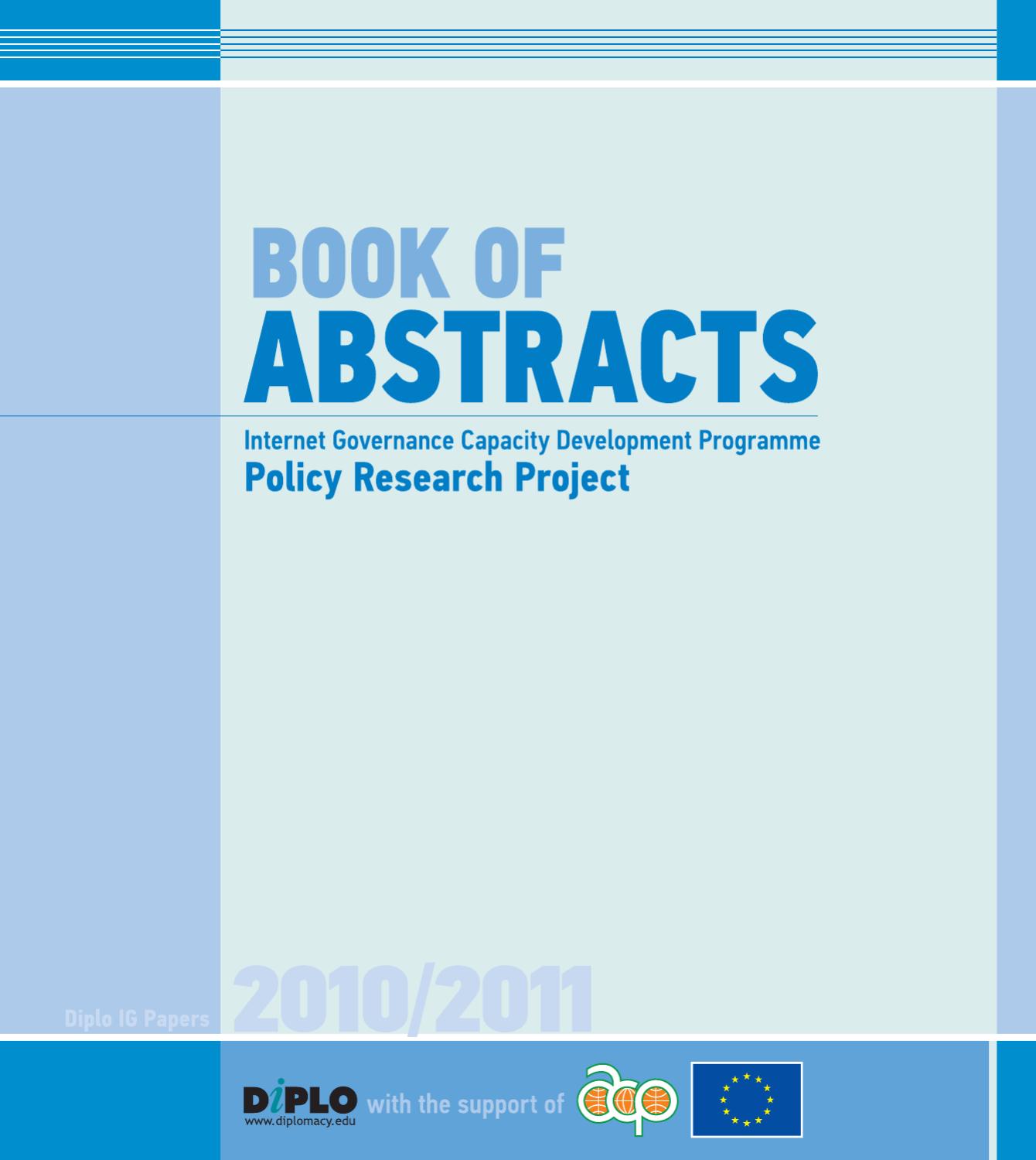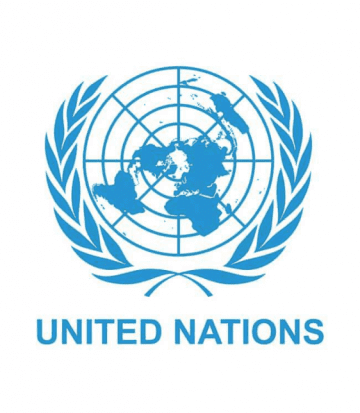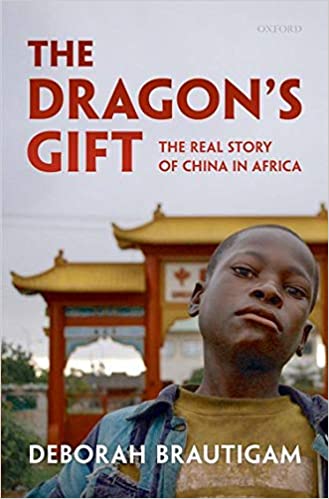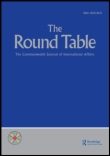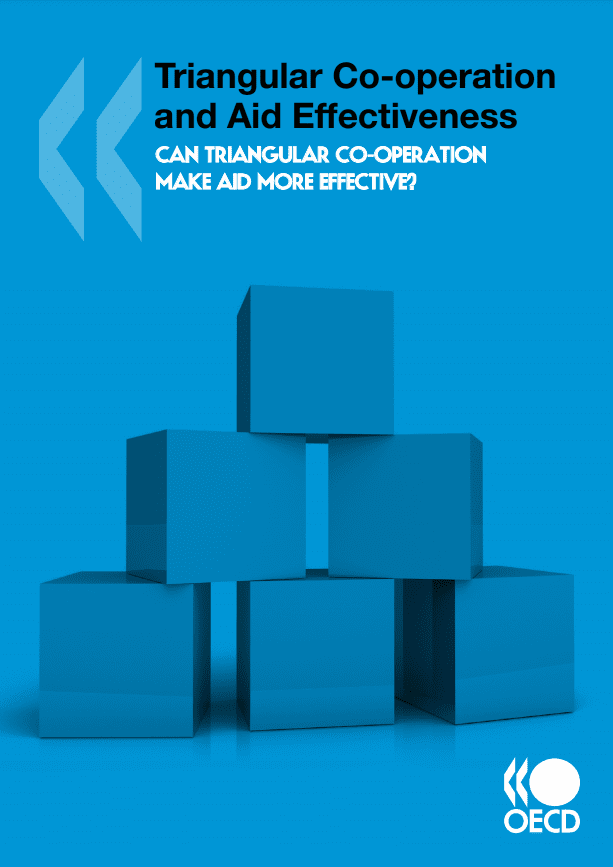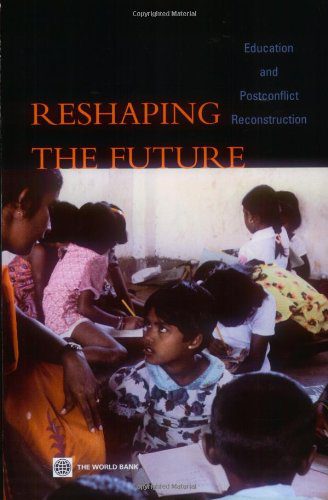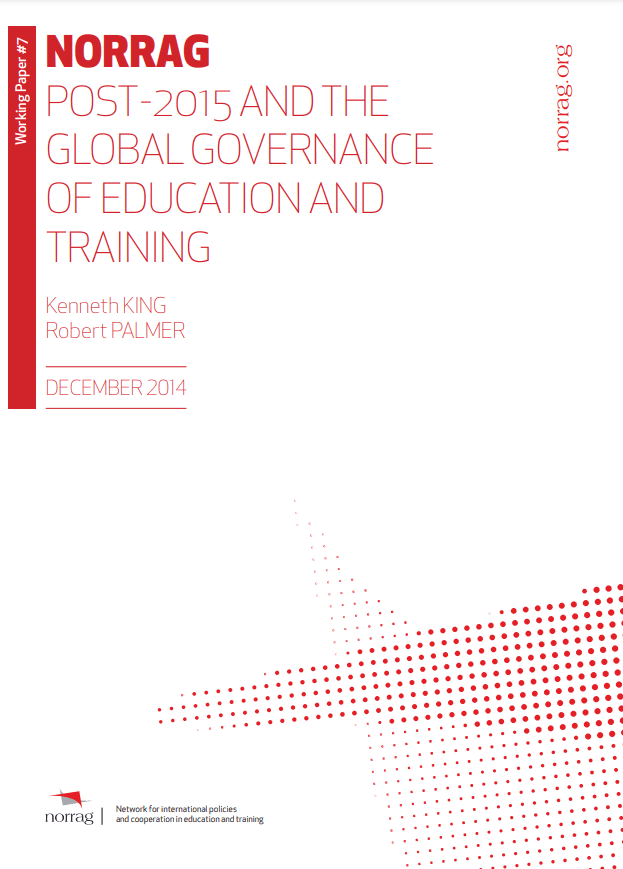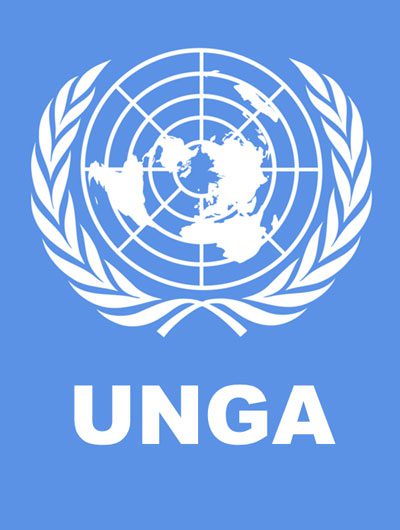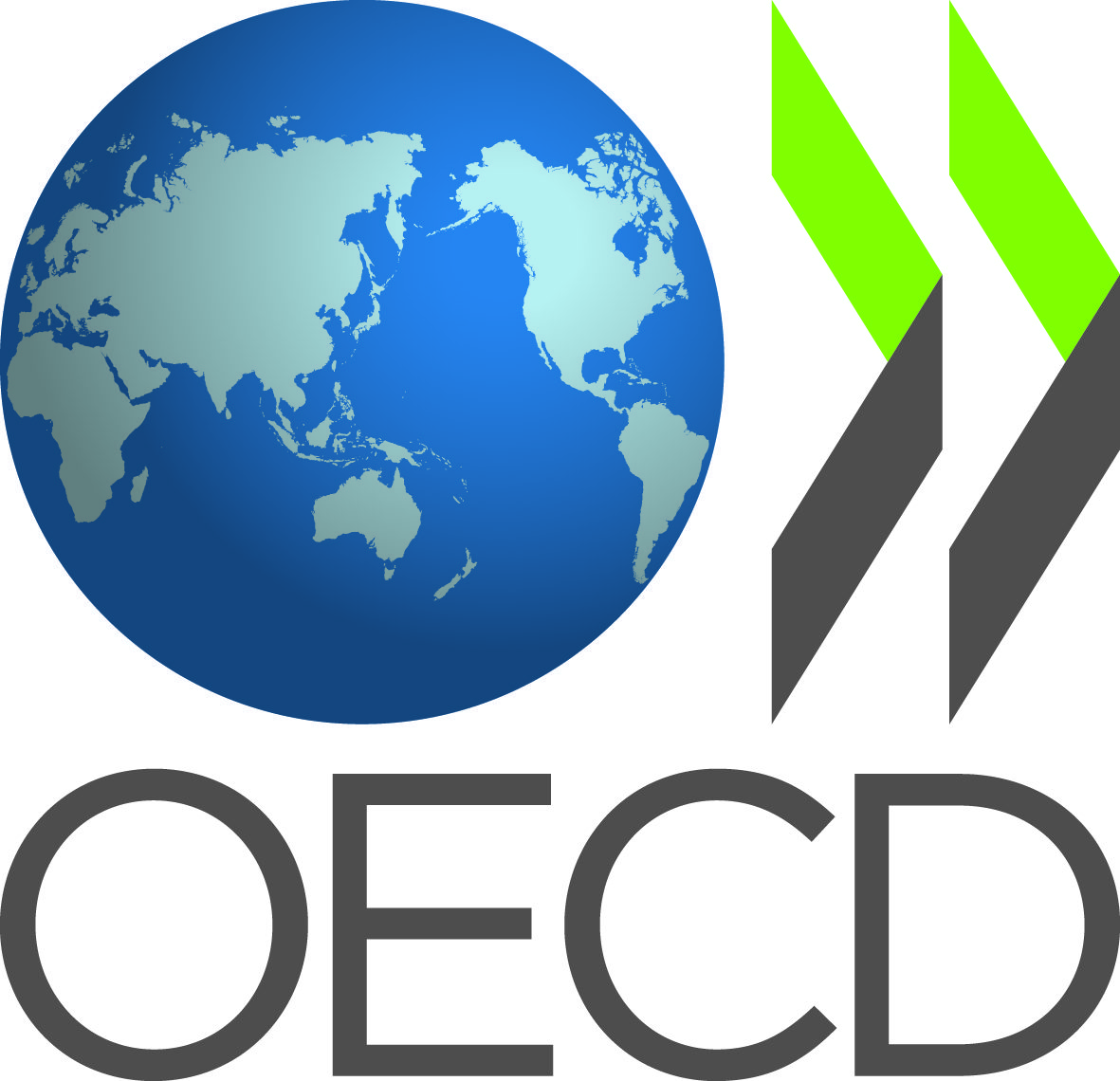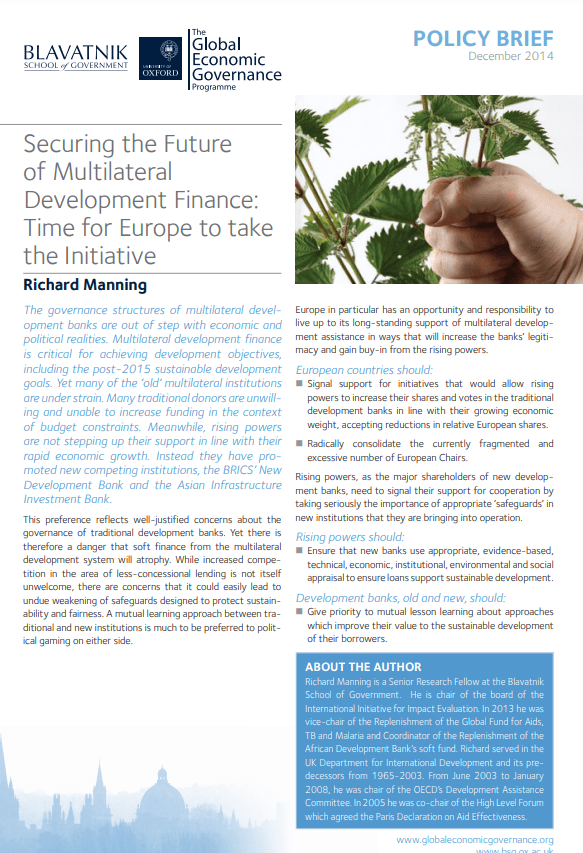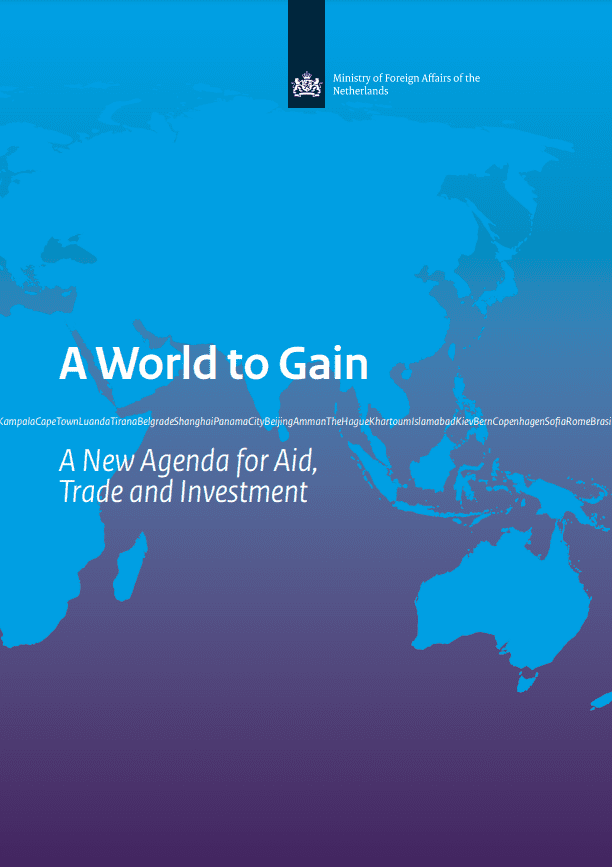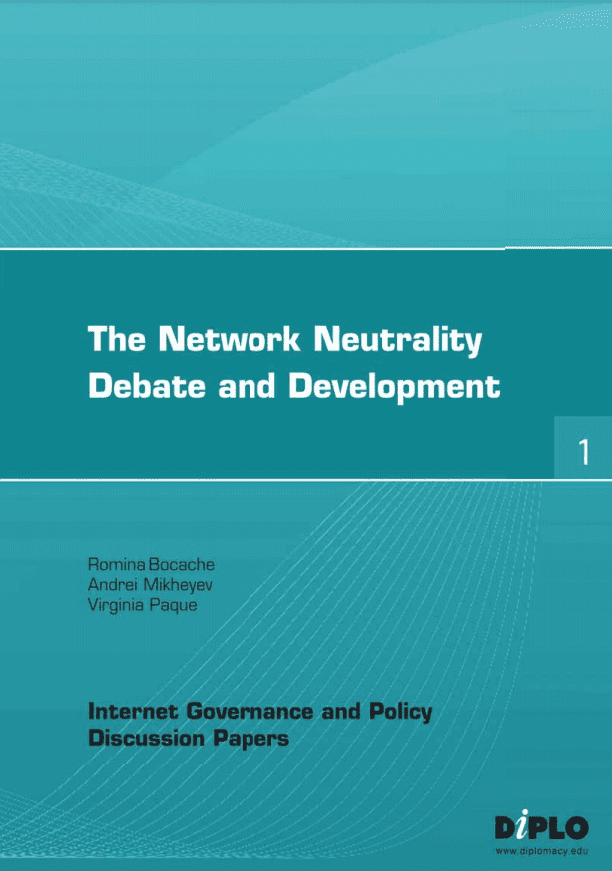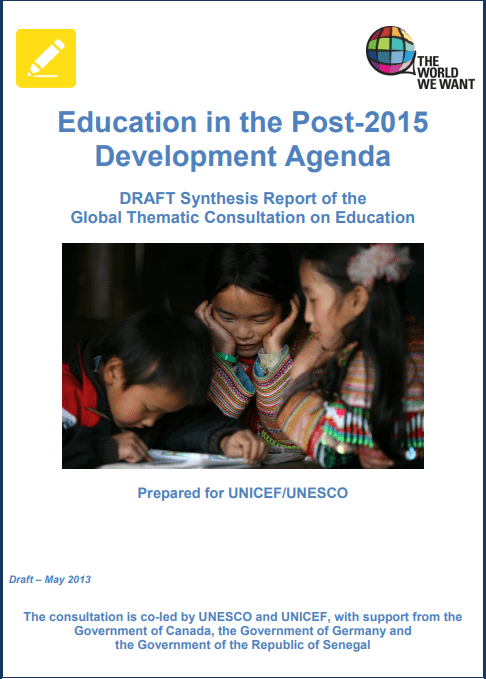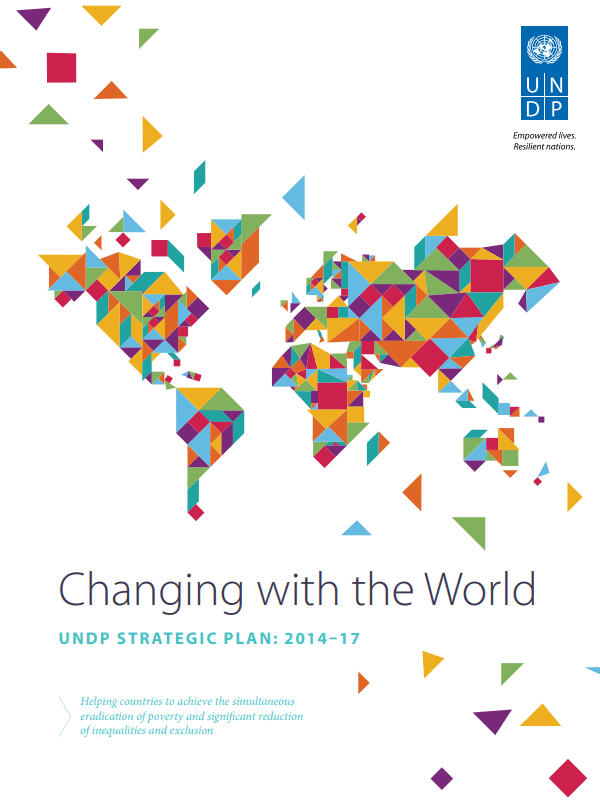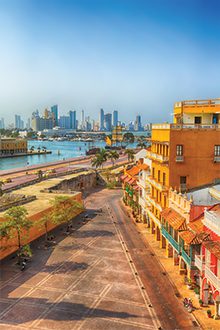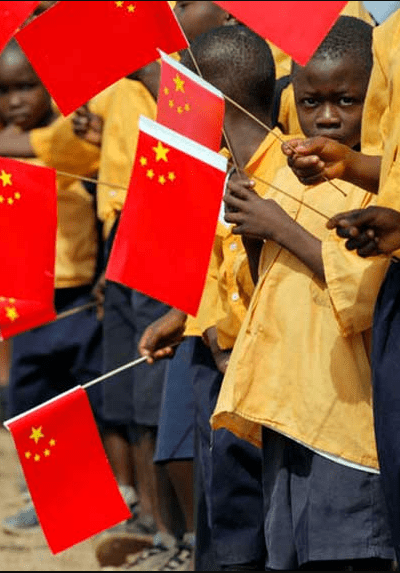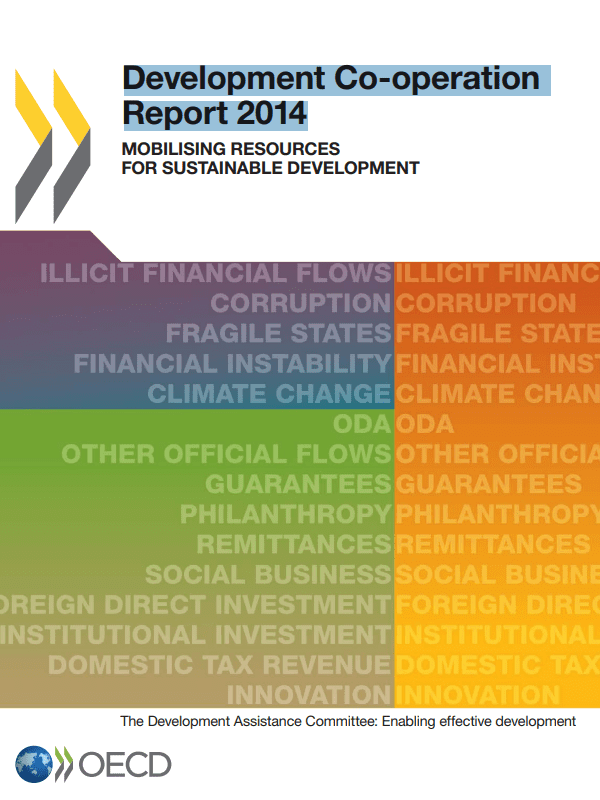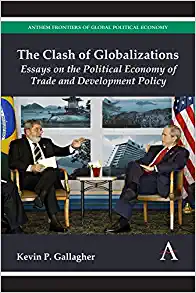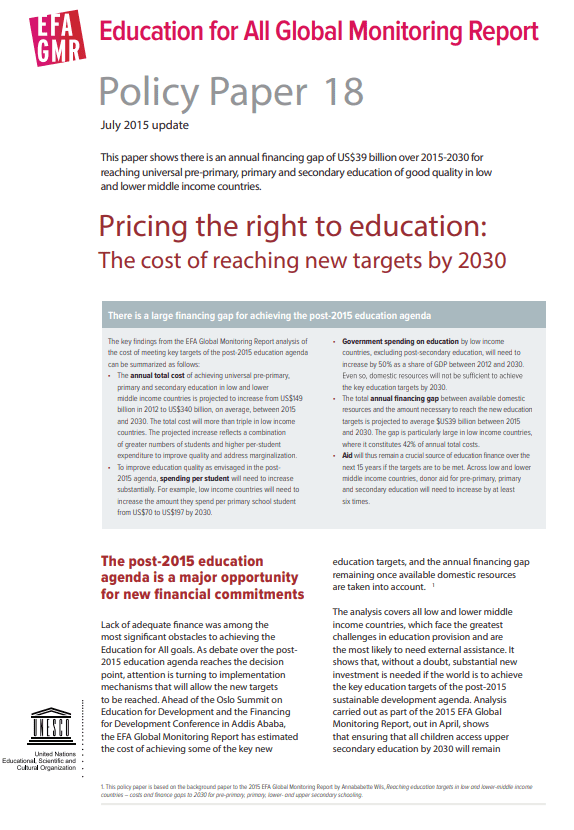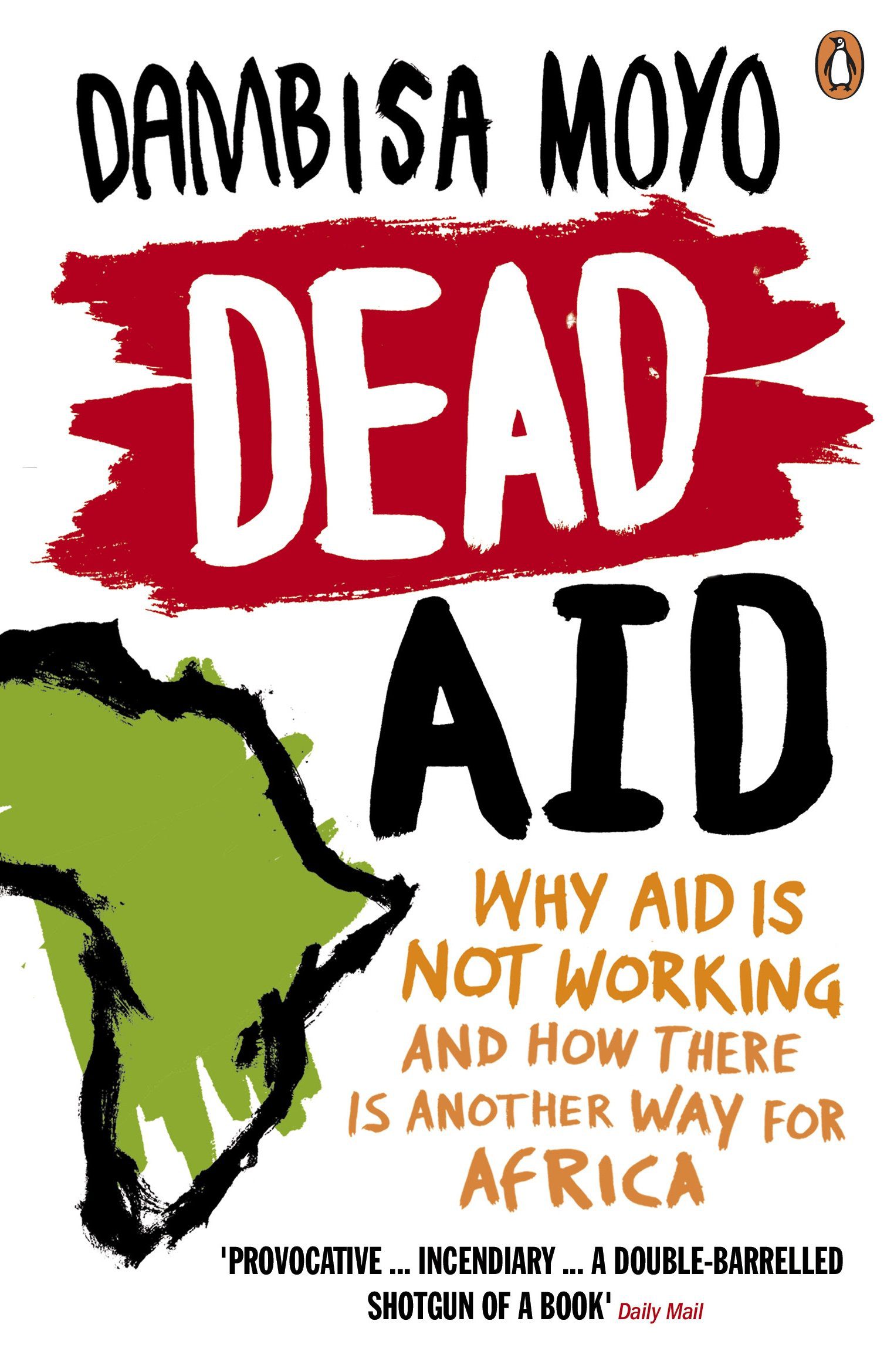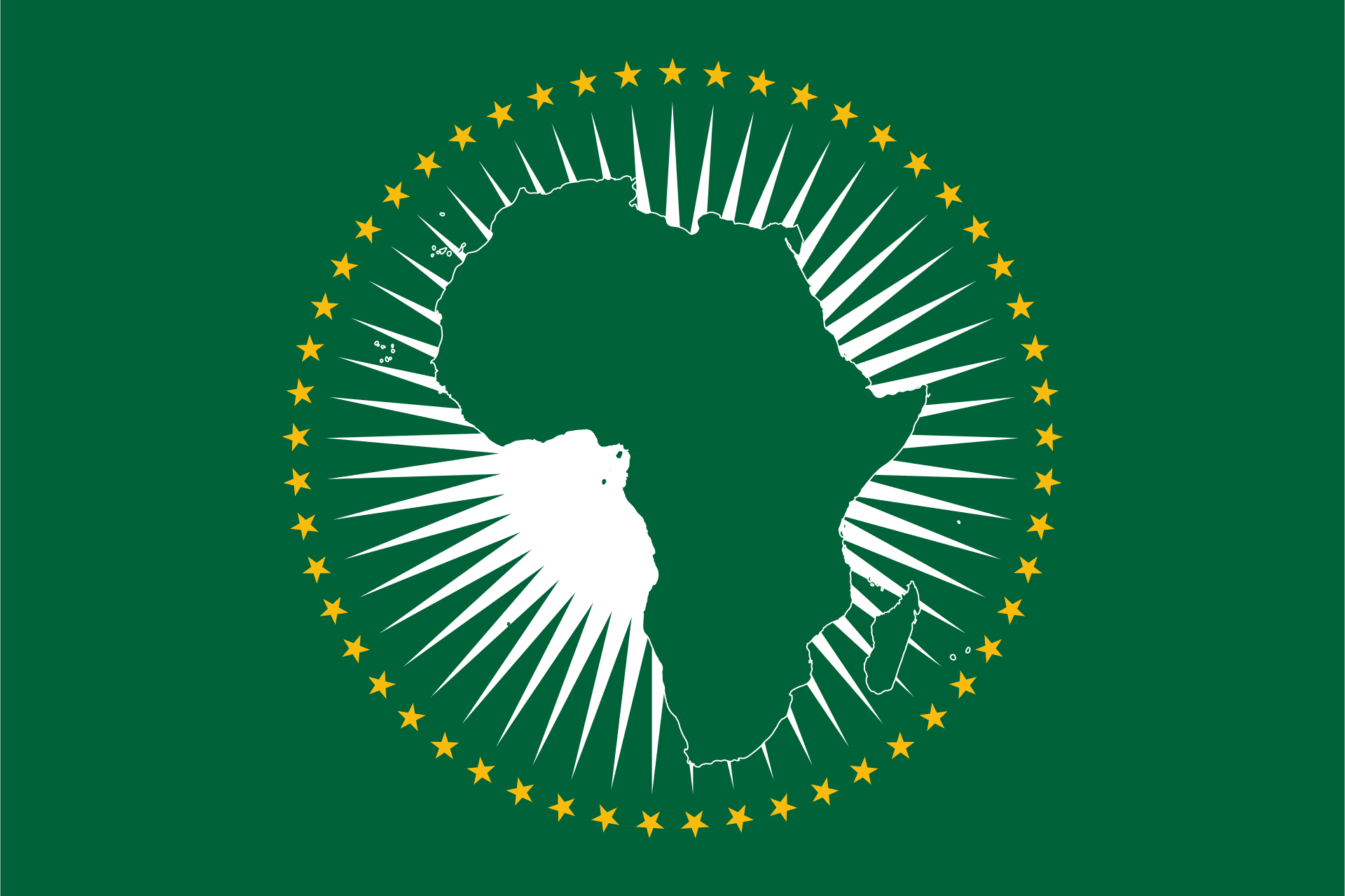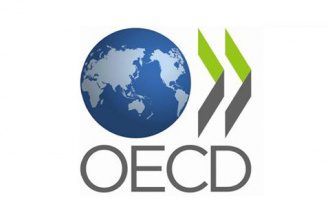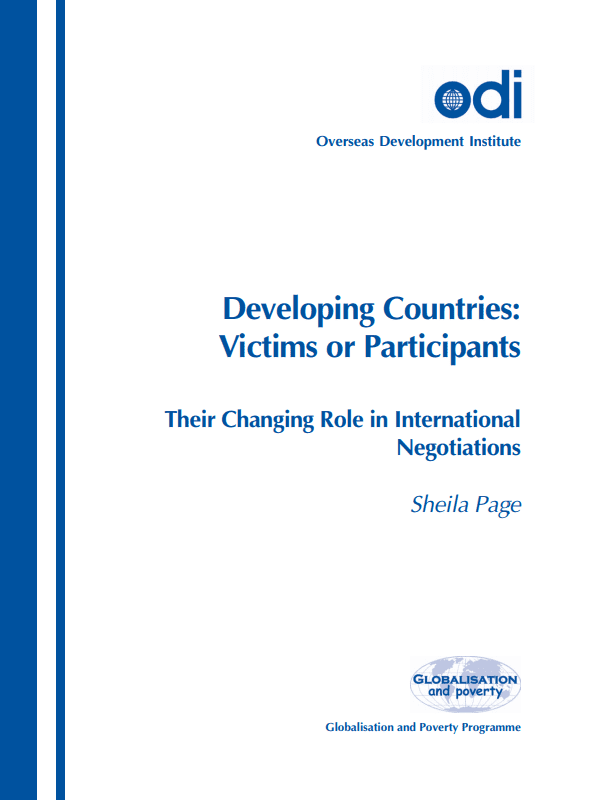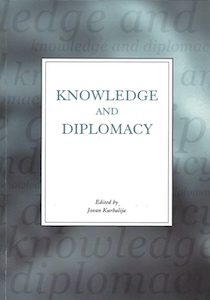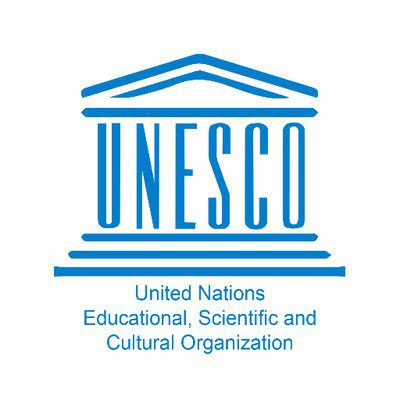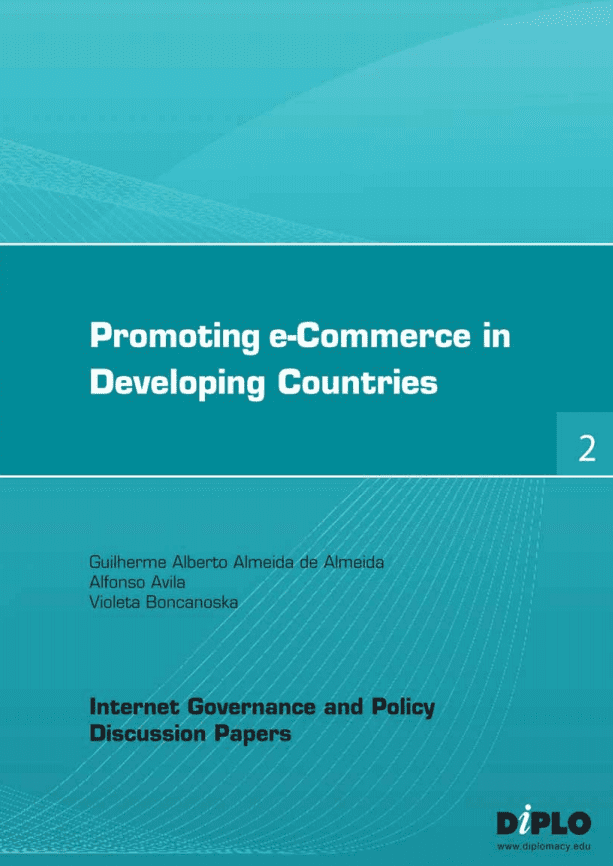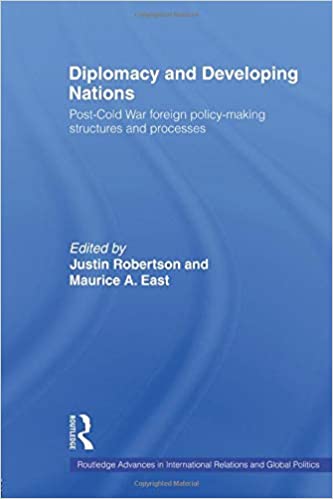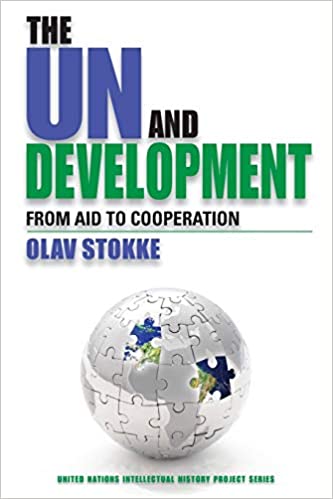South Africa underwent historic and radical change both in its domestic political and social structures and in its objective and perceived role and position in the world since the beginning of the nineteen-nineties. These changes have been reflected in South African external relations and in the conduct of South African diplomacy. The country has made an impressive transition from one of the most isolated in contemporary history to a fully integrated member of the international community conducting what its foreign policy makers term a “universal foreign policy.”
The conduct of South African diplomacy has also been changed in many ways: whereas it was previously an interesting case study of “pariah diplomacy,” it has now become more conventional though no less interesting. In the interim between the historic February 1990 speech by President De Klerk and the April 1994 democratic elections and the coming to power of the ANC led government under President Mandela, changes were already beginning to occur.
However, the more thorough-going changes would come after May 1994. The situation more than three years hence remains dynamic. Current developments, as the new South Africa adapts to an ever-changing regional, continental and global environment, are reviewed against the background of the historic situation and of the evolution of diplomacy world-wide.
Introduction
The historic and radical changes which South Africa underwent since the beginning of the nineteen-nineties both in its domestic political and social structures and in its objective and perceived role and position in the world, have been well-documented by now, as have the radical changes in the international arena which accompanied the end of the Cold War. The practice of diplomacy has been evolving world-wide in response to the latter changes. Current developments in the conduct of South African diplomacy are shaped by all of these, domestic and international. South African diplomacy remains dynamic and will continue to evolve and adapt.
There is a particularly sharp contrast between pre-political transition and post-political transition South African diplomacy. This has been explored elsewhere(1) and may be summarised here: the “old” South African diplomacy had been secret and low-key, the “new” is characterised by summitry and a powerful role for the head of state; the “old” had particular difficulties in Africa and Southern Africa and interaction with the region was often characterised by the use of force, whereas the “new” has a strong regional focus, with “preventive diplomacy” as an innovative feature; the “old” was primarily bilateral, whereas the “new” has a very strong emphasise on the multilateral. In addition, one could also mention that the “new” South African diplomacy was heralded by a rapid extension of formal relations and representation abroad for a country which had formerly been the most isolated in modern times.
The Department of Foreign Affairs and Foreign Service have also been made more inclusive of all sections of South African society and a greater role for parliament and public opinion in foreign policy making has been emphasised. It has been accepted that a great measure of openness and transparency in foreign affairs should be the goal. Nowadays there is hardly the same need for various forms of “unconventional diplomacy” as in the old days, as the “new” South Africa has few enemies. However, this has not prevented some innovation in diplomacy; South African diplomacy is in many ways subject to special tensions and these can manifest, amongst other things, in innovativeness. Herein will lie its contribution to modern diplomacy, which is by nature continuously evolving in response to the needs of the times(2) and is in the final instance shaped by all participating in it.
In this paper current South African diplomacy is reviewed against the background of the historic situation and of the evolution of diplomacy world-wide. The following will be looked at briefly: current developments in South African foreign policy, some issues and incidents and how these impact on the way in which South Africa communicates with the rest of the word, i.e., South African diplomacy; current developments in the South African Department of Foreign Affairs, its structure, problems encountered, personalities involved and including the deployment of South African missions abroad; the use of direct communications and technology; official visits abroad as well as visitors to South Africa, with special emphasis on summitry; South Africa’s increasing involvement in international organisations, conferences and agreements and the implications of this for South African diplomacy. The paper will conclude with some remarks regarding the future of South African diplomacy.
Current Developments in South African Foreign Policy: Some Issues and Incidents
Olivier and Geldenhuys described the evolution of South African foreign policy as follows:
For symbolic and political reasons, the South African foreign policy continuum, which existed since autonomy from British rule, had to come to an end with the accession of the new ANC-dominated Government of National Unity (GNU) in 1994. The old regime’s foreign policy and culture had to make way for political legitimacy defined by the ANC’s vastly different political philosophy, external experience, constituency, and priorities.(3)
A radical ideologically driven foreign policy was probably prevented by the necessity of adaptation to the new post-Cold War world environment, a change which took place almost in tandem with South Africa’s domestic transformation and implied a far more complex external environment.(4) However, the new government did bring about important philosophical shifts and many changes in emphasis and priorities: the old regime was “philosophically right-wing oriented, uncompromisingly pro-Western, critical to the point of being hostile to the Third World and its causes, and sceptical about universal liberal ideals such as human rights and gender issues.”(5) The shift in policy implied that priority would now be given to the African continent and in particular Southern Africa, to the southern hemisphere, the Non-Aligned Movement, and to universal moral and humanitarian issues.(6) This had a substantial impact on the frequency and nature of contacts between South African leaders and their counterparts in the areas of priority, and on South African involvement in international organisations, conferences and agreements.
A lively debate has been taking place amongst academics and other observers of South African foreign policy regarding how consistent and substantial support for universal liberal ideals and human rights has actually been and the broad consensus seems to be that, although the rhetoric is still there, actual practice has shown that the new South African government may be influenced quite substantially by old friendships on the one hand and pragmatism on the other.(7) The pragmatism has probably been brought on by economic imperatives as well as some rather disappointing failures in foreign policy (or diplomacy?). A case in point is the Nigerian case where President Mandela’s strong stance and attempt to get support for strong action against the Nigerian regime after the hanging of the political dissidents, came to nothing and turned into a loss of face. There is no room here to go into the debate, the merits of the “broad consensus” mentioned or the question what South African should be doing with regard to its “human rights foreign policy.” The important issue here is how South African foreign policy, such as it is, has shaped her diplomacy. As will become clear below, policy and implementation (diplomacy) have in some cases been mutually influential.
Foreign policy issue areas in which the new South Africa has made special efforts and has had some considerable success, have included non-proliferation and disarmament of weapons of mass destruction and of conventional weapons, including land-mines. According to the Department of Foreign Affairs, South Africa’s policy of non-proliferation, disarmament and arms control forms an integral part of its commitment to democracy, human rights, sustainable development, social justice and environmental protection.(8)
The primary goal of this policy is to reinforce and promote South Africa as a responsible producer, possessor and trader of advanced technologies in the nuclear, biological, chemical and conventional arms fields and in implementing it high priority is given to nuclear, chemical, biological, missile delivery systems non-proliferation, conventional arms export control, small arms non-proliferation as well as working towards a ban on anti-personnel landmines.(9)
According to a document on this aspect of policy,(10) South Africa is generally accepted by countries from the Non-Aligned Movement (NAM) as well as the developing world, especially the Nuclear Weapons States, as a leader in the field. South Africa is seen as having the standing and the capacity to promote dialogue and interaction between the developed world on the one hand, while on the other, address the concerns of the developing world that they do not acquire the technology they need for their development. The South African government, therefore, supports all bilateral and multilateral initiatives to prevent the proliferation and development of such weapons on the one hand and to promote total disarmament of these weapons on the other.
South Africa’s strong stance in the area of disarmament and arms control has not meant that it ceased to function as an arms trader; as has been mentioned it merely implied that it would act as a “responsible arms trader.” The sale of arms is, therefore, supposed to take place according to a fixed set of criteria.(11) However, the application of these criteria and the resulting decisions about whom to sell to, may not necessarily correspond with what others, notably the United States (US), would want to see happen. This has resulted in some diplomatic difficulties for South Africa, as in the case of the leaking of information on the possible sale of arms to Syria and the resultant tension in relations with the US.(12)
As far as the impact of the shift in foreign policy on bilateral relations was concerned, it was more a question of adding than changing.(13) The old South Africa was very isolated and even ties with the Western countries were restricted. Immediately after the 1990 De Klerk speech, which heralded real political change in South Africa and started the country on the road to regaining respectability in the international community, existing ties were beginning to be restored to normal and some new ties (such as with Eastern Europe, due to changes there) were being forged.(14) After 1994, the new government did not bring about changes in a zero-sum fashion.(15) Relations with the West were not downgraded – in fact, in some ways these relations have been raised to “a higher plateau than previously.”(16)
However, many new ties were forged, including the cementing of relations with countries formerly known for their animosity toward Pretoria and including some so-called pariah states. Most African states (including the “pariah” Libya), India, Iran, Pakistan, Syria, Mexico and Cuba, are examples of the new additions.(17) This “universal foreign policy” made necessary a vast extension of South African diplomatic communications (permanent and ad hoc). However, resource and other constraints (such as the lack of sufficiently trained and experienced personnel) and special circumstances in individual cases, resulted in some difficulties. In addition, relations with the “pariahs” have put a strain on South Africa’s relations with the United States, necessitating some diplomatic manoeuvring.(18)
The much debated and analysed love/hate triangle between South Africa, the Peoples Republic of China (PRC) and the Republic of China/Taiwan, is another interesting foreign policy and diplomatic case study.(19) It took the new South African government quite some time to finally make a decision on the issue: prior to the political change in South African diplomatic relations at ambassadorial level had been maintained with Taiwan and this was retained after 1994. In the meantime a “special type” of diplomatic representation was exchanged with the PRC. At the end of 1996 the decision was finally made to opt for full diplomatic relations with the latter and to downscale relations with Taiwan. At the end of 1997 this came into effect and the special type of representation was now in place for Taiwan.(20)
Current Developments in the South African Department of Foreign Affairs: Structure, Problems and Personalities
Reorganisation and restructuring are not new to the South African Department of Foreign Affairs (DFA): since its establishment in 1927 it had continuously been adjusted to changing circumstances and perceptions about the best way to organise it.(21) In summary, by the late 1980’s the DFA closely reflected South Africa’s unique position and the country’s perception thereof. It was basically organised along geographic lines and it was quite noticeable, therefore, that some regions of the world were hardly regarded as worth much concerted effort, that international organisations generally got rather limited attention, and that those who organised the Department did not think in terms of global issues. Of course, South Africa could not always choose to have relations with foreign countries, as it was actively isolated by many. The TBVC states (the “independent” homeland created by South Africa, but recognised by none except South Africa and each other) occupied a relatively large number of people in the Department.(22)
Immediately after 1990, some changes began to occur in the Department, one of which was the “upgrading” of multilateral affairs from a directorate to a chief directorate (1991). However, it was still housed within the Branch: Overseas Countries and the range of issues reflected in its structure was not yet as extensive as it is today.(23) By March 1992 there was a complete Multilateral Affairs division, separate from the Branch: Overseas Countries and gradually the range of issues provided for were being extended.(24) Other changes were also being effected to provide for new ties being forged: Eastern Europe, which had previously been conspicuously absent from the organisational chart of the DFA, appeared early on and the Africa Branch had shown considerable growth.(25) Other more subtle changes were that a greater awareness of the different countries in, for example, Asia was manifest from the structuring of the section responsible for relations with that part of the world, and the fact that, at that time, the Middle East was apparently increasingly seen as part of Africa.(26)
After the political transition of 1994, the political map of South Africa changed and the TBVC “states” were “reincorporated” into South Africa and “disappeared” from the organisational chart of the DFA. The way in which the various sections of the Department were listed, also seemed to suggest a shift in emphasis: Branch: Africa was listed before Branch: Overseas Countries, the Multilateral section was listed before any bilateral sections and within branches where multilateral sections were also included, the latter were listed before the bilateral component.(27) Perhaps one should not make too much of this; however, what other feasible explanation can one think of except a change of perception, albeit unconscious? Fact is that multilateral relations remained a growth area and the relevant section of the DFA was further expanded and diversified.(28) By early 1996 the Multilateral Branch, taken together with the division of Branch: Africa and the Middle East which concerned itself with multilateral relations, almost balanced those sections of the DFA burdened with bilateral relations.(29)
Reference has already been made to the fact that the new government did not follow a “zero-sum” foreign policy, but rather a “universal” one, which implied that ties with Western countries were not downgraded at the expense of the forging of new ties with countries which had distanced themselves entirely from the old South African regime. This approach was reflected in the fact that ample provision which was still made at head office for relations with North America and (Western) Europe, in spite of all the new additions, such as Africa, Asia and the Far East.(30)
Towards the end of 1997 an organisational chart of the DFA listed five Branches (Bilateral Relations (Africa); Bilateral relations (Americas & Europe); Bilateral Relations (Asia & Middle East); Multilateral Relations; Administration. Also listed were two Chief Directorates (Legal Affairs and Corporate Liaison) and a Sub-Directorate (Work Study) independent of the branches.(31) Effective from 1 December 1997, a Democratic Transformation section was also added.(32)
The breakdown of these divisions, when looked at in detail, amply illustrates the extension of South Africa’s foreign relations to include all regions of the world, many functional aspects and a great intensity of interaction.(33) However, this is not a static picture. Budgetary problems will probably prevent too much further extension, but will hopefully not cause shrinkage. The organisational chart of the Department is, as in the past, continuously changing in its detail. A prime example of this is the change which was effected in the Multilateral Branch in January 1998 and which entailed the scrapping of the NAM (Non-Aligned Movement) Sub-directorate as a subsection of the Directorate ASAS, NAM and the Commonwealth – which in turn had formed part of the Chief Directorate: Multilateral Political and Security Affairs – and replacing it with a separate Chief-Directorate of Branch: Multilateral Relations.(34) This was, of course, directly due to the capacity required in South Africa to organise the NAM Summit in 1998 and also to support the Chairmanship of the Movement thereafter.
The DFA’s capacity to handle the many and varied challenges resulting from the extension of the country’s relations with the external world, has been sorely taxed. The Department has had to deal with the challenges of the process of integration of six different “diplomatic services” – those of South Africa, the four TBVC “states,” and the ANC’s “foreign service” – all of which came with different levels of training and experience and, of course, with often divergent perceptions of the world and the role South Africa should play in it.(35) All of this had to be dealt with at the same time as the DFA was subject to very serious budgetary constraints due to the great need for funds to get the Reconstruction and Development Programme off the ground.
The DFA is also subject to constant criticism and is often in the news due to rumours and accusations about appointments, the ineffectiveness of the Minister and his possible replacement, and the stepping down of and successor for the Director-General, Mr. Rusty Evans – who had stayed on after 1994.(36) After months of speculation about when Mr. Evans would vacate his post, where he would go and who would succeed him, the Director-General finally retired towards the end of 1997 and he has been temporarily replaced by one of the Deputy Directors General in the DFA, Ms. Thuthu Mazibuko.(37) It is now rumoured that a permanent appointment may soon be under way in the person of Mr. Jackie Selebi, currently Ambassador to the UN in Geneva.
South Africa’s overseas missions grew quite spectacularly from 1990 onwards: in 1990 South Africa had representation in only thirty states and by 1997 this had grown to 160 states.(38) This meant ninety-six missions, including a mission accredited to the Palestine National Authority and located at Ramallah on the West Bank, and five multilateral missions: New York (United Nations), Geneva (United Nations), Addis Ababa (OAU), Brussels (European Communities, including the European Union) and Vienna (International Atomic Energy Agency).(39)
The ninety bilateral missions were made up of twenty-four in Africa,(40) forty-five in America and Europe,(41) and twenty-one in Asia and the Middle East.(42) Many of these bilateral missions are actually accredited to more than one country, which accounts for the 160 countries South Africa is represented in.(43) This is in very many cases a cost saving practice and certainly not uncommon. The result is that South Africa has been able to establish representation (including diplomatic and consular representation) in all but twenty-two states in the world, “a number that includes some very small states and none of major significance to SA, except Iraq.”(44) This number also includes some potential trouble spots, such as North Korea and Haiti, several Pacific island states, three African countries (Liberia, Somalia and Sierra Leone), and some central American states, including El Salvador and the Dominican Republic.(45)
South African representation abroad is a good illustration of the country’s “universal foreign policy” though it is clear that economic pragmatism weighs heavily in the allocation of missions abroad. According to the DFA, the expansion process has been slowing since 1995 and is now all but over.(46) There is no doubt that financial considerations play an important role in this, though it is not necessarily the only consideration.
South Africa is now facing some new dilemmas, including the problem that there is not full reciprocity in the country’s foreign representation: there are a number of countries maintaining a presence in South Africa despite the fact that South Africa has no representation in those countries, and there is also not full reciprocity as to the status of representation.(47) In addition there is great disparity in residential and non-residential representation.(48) Of course, reciprocity is not an absolute rule in diplomacy, but too great a disparity could well be cause for growing irritation in the long run. Only time will tell whether South Africa will address the problem by increasing its overseas representation or whether some other countries will in due course end their representation in South Africa due to the disparity.
In answer to budgetary pressures, it was reported in the press in early 1997, South Africa was keen to discuss sharing resources with other SADC countries, possibly by accrediting South African representatives to the embassies of other countries in exchange for allowing representatives of SADC countries to share South Africa’s resources.(49) However, nothing has apparently as yet come of these plans of sharing missions as a moneysaving idea. The idea may be taken up again in future.
With regard to permanent foreign representation, mention should in conclusion be made of the nature of the missions exchanged between South Africa and the two Chinas. As was explained before, the new South Africa initially continued diplomatic relations at ambassadorial level with Taiwan – a “left-over” of the old South Africa. However, in 1991 an informal representation agreement was concluded with the PRC and in March 1992 informal offices were established in the form of a South African Centre for Chinese Studies in Beijing and a Centre for South African Studies in Pretoria.(50) From 1 January 1998 South Africa and Beijing exchanged embassies and the respective missions in Taiwan and South Africa have been downgraded to a liaison office. Initially it had been hoped, (by Taiwan in particular) that relations could be maintained at a level just short of diplomatic relations. However, Beijing had consistently exerted pressure on South Africa in this regard and Taiwan got rather less than it had hoped for.(51)
The Use of Direct Communication and Technology
The Nigerian debacle in November 1995, when President Mandela made a call for strong action against the Nigerian regime at the Commonwealth Summit in Auckland, New Zealand, occurred after lengthy and ineffectual “quiet” diplomacy by Deputy President Thabo Mbeki, Foreign Minister Alfred Nzo and Archbishop Desmond Tutu. However, the President had apparently not consulted directly with his regional neighbours prior to his scathing indictment of the Abacha regime and his call for sanctions on Nigeria. Up to then he had apparently been in the habit of doing so, often by telephone, and this included the successful 1994 diplomacy with regard to the “King’s coup” in Lesotho.(52) The lack of support from his regional counterparts in the Nigerian case would seem to indicate that perhaps in this case he did not consult directly with them prior to his public action. Should this be the reason for failure in this case – rather than its being a case of foreign policy failure – this may illustrate very well the working of the so-called “Mandela magic” so often referred to.(53) In the case of Nigeria then, a failure of diplomacy – strong action at a summit without prior direct consultation with other African leaders putting the “Mandela magic” to work – may well have led to change in policy – the subsequent weaker stand by South Africa on the issue.(54)
In addition to using the more conventional direct communications media, such as the telephone, the DFA has apparently also been working towards gearing themselves for the new technology, such as the electronic media. This may be deduced from the inclusion in the organisational chart of the Department, within the Branch: Administration, of a Directorate: Telematics and a Directorate: Information Technology.(55) Such sections were apparently not present in the Department in, for example, 1995.(56) The electronic medium is obviously intended for easier communications within the DFA (including communications with the missions). However, it could also be used for diplomacy as such and information technology is now getting increasing attention in this context. A DFA Website is envisaged for May/June 1998.
Visits and Visitors: The prominent role of summitry
Another manifestation of the awareness of the value of the “Mandela Magic” referred to above, is the great use to which summitry as a form of diplomacy is put by the new South Africa. Elsewhere this has been described as one of the main characteristics of the new South African diplomacy.(57) This form of diplomacy has been used in the implementation of many aspects of South African diplomacy, but probably most noticeably to further South Africa’s economic interests (trying to put to work the “Mandela Magic”), to forge relations with countries in Africa and the rest of the Third World (underlining the importance of these relations by adding the symbolic value of diplomacy at the highest level), and in South Africa’s role as regional agent for peace (which, of course, also implied the putting to work of “Mandela magic” in trying to bring about resolution of conflict). With regard to the latter aspect, it should be noted that expectations concerning the role South Africa could and should play in peacemaking and peacekeeping have been very high. Apart from noteworthy diplomatic initiatives – often at the level of head of state – in the case of Nigeria, Lesotho, the Great Lakes area, and Zaire, South Africa has been reluctant to don the mantle of peacekeeper and commit much resources other than the diplomatic to such issues. However, this could change in future.(58)
According to one source, between them the President and Deputy President/s paid forty-six foreign visits in the period of eighteen months from January 1996 to June 1997.(59) These included both summit conferences (often relating to the region) and (bilateral) state visits. It is quite noticeable from the list that visits to important economic and trading powers in Europe and the US were the object of many of these; however, African countries also featured strongly.
The latter category of visits included a number of Southern African summits, two OAU (Organisation of African Unity) summits, and visits by Deputy President Mbeki to Zaire and President Mandela to the Republic of Congo to meet with President Mobutu Sese Seko and Mr Kabila in an attempt to broker peace and a democratic transition. President Mandela also undertook a state visit, in February-March 1997, to the Phillippines, the Sultanate of Brunei, the Republic of Singapore and the Federation of Malaysia. The visit was – in the days prior to the economic crises in Asia – aimed at furthering the economic interests of South Africa.(60)
According to press reports President Mandela and Deputy President Mbeki paid at least another ten foreign visits later in 1997.(61) President Mandela visited Indonesia in June 1997 to aid the peaceful solution of the East Timor question, visited Switzerland in September 1997, Libya, Egypt, Morocco and Scotland (for the Commonwealth Heads of Government Meeting) in October 1997, and Saudi Arabia in November 1997; and Deputy President Mbeki visited Algeria, Mali, Argentina, Brazil and Chile, Germany and Austria, and Gabon, between July and November 1997. He also visited Germany to co-chair the inaugural meeting of the South African/German Binational Commission on 1 October 1997. Quite obviously the Deputy President carries the brunt of summitry at the present time.
At the level of head of state or government or deputy head of government, some eleven visits were paid to South Africa in the period February to November 1997, according to DFA media statements. These included visits from the King of Sweden, the presidents or vice-presidents of Finland, Uganda, Rwanda, Sudan, the Democratic Republic of the Congo, Togo and Indonesia, and the prime ministers or deputy prime ministers of Singapore, Saudi Arabia and India.
Summit conferences and state visits are however not the only forms of ad hoc diplomacy employed by South Africa. Many visits, at many different levels, have been taking place, both of South Africans abroad and by foreigners to South Africa. Some were bilateral in nature and others multilateral, involving more than two parties at the same meeting. One source lists thirty-seven overseas visits for the South African Minister of Foreign Affairs in the period January 1996 to April 1997 and this included visits to many African and European, as well as other countries.(62) In some of these cases the Minister accompanied the State President.
These visits also included attendance at the funeral of the late King of Lesotho in January 1996, participation in the Joint Permanent Commission between Iran and South Africa, and in the 51st Regular Session of the UN General Assembly. According to the same source the Deputy Minister paid eleven visits to foreign countries between May 1996 and April 1997 and these included visits to Ghana, Botswana, the United Kingdom (London), the US (Atlanta, Washington), Angola, Zimbabwe, Namibia, Nigeria, India, Rwanda and Togo.(63) After April 1997 DFA media statements and/or the South African press also reported at least nine visits by the South African Foreign Minister and/or Deputy Foreign Minister to foreign countries including Pakistan, the UK, Indonesia and Thailand, Kenya, Swaziland, Ukraine, the US, Zimbabwe, and Canada. In July 1997 a delegation of 130 officials went to Washington to attend the fourth US/SA Binational Commission meeting – the Commission had been founded in 1994.(64) A December 1997 meeting to the US for Deputy Minister Pahad entailed leading a government delegation to hold discussions with the US Assistant Secretary of State for Political-Military Affairs concerning the resolution of the (long standing) Armscor case.(65) This was aimed at normalising defence trade relations between the two countries.
There were also reports/media statements on a variety of official visits by foreigners to South Africa at levels lower than deputy president or deputy prime minister during 1997 and early 1998. These included visits from Portugal, Norway, Libya, Morocco, Kazakhstan, Australia, Mozambique, Thailand, Egypt, Algeria, France, Belgium, Switzerland, Indonesia, Iran, Zambia, Hungary, the Peoples Republic of China, Italy and Russia, as well as of officials representing various international organisations. It also included a visit by Zairean opposition leader Kabila in May 1997 – that is, before he became president – and by Indonesian opposition leaders in July 1997.
Given the expectation that international interactions will continue to increase in frequency and intensity and given the assumption that South Africa will not be marginalised, foreign visits to and from South Africa will probably increase even further in future. Depending on the diplomatic style of the future Head of State (probably Thabo Mbeki, after April 1999) and his deputy or deputies, this may also hold true for summitry. In the interim between now and the 1999 elections, President Mandela’s health will doubtlessly be a factor in determining how many visits he will personally undertake, and the Deputy President will in all likelihood continue to make the more frequent contribution to South African summit diplomacy.
International Organisations, Conferences and Agreements: the Importance of Multilateralism
As was mentioned before, the Multilateral Branch of the DFA has become very prominent and active largely as a result of the shifts in South African foreign policy as well as the fact that South Africa is once more acceptable in international society and has joined a great many international organisations. This is a reflection of the importance attached to membership of international organisations, the demands of effective participation in international conferences, the need for the conclusion of many new agreements in a globalising wo
rld, and the special importance the new government attaches to certain issues (such as non-proliferation and disarmament). South Africa has concluded increasing numbers of international agreements,(66) many of them multilateral, and has in fact been called to positions of leadership in some important international fora. This includes the election of South Africa as Chairperson of SADC (Southern African Development Community) at its Summit in August 1996, a position the country will hold until 31 August 1999,(67) the chairing of the United Nations Conference on Trade and Development (UNCTAD) in April-May 1996, and the assumption of the UNCTAD presidency by South Africa’s Trade and Industry Minister, as well as the hosting of the NAM Summit in the second half of 1998 and the assumption of the chair of the organisation by South Africa .(68) The country is also co-founder of some new international arrangements, such as the Indian Ocean Rim Association for Regional Cooperation.(69 ) South Africa is now participating in a vast number of international organisations on a regular basis.(70)
The extensive involvement of the country in multilateral affairs is reflected in the Annual Report of the Multilateral Branch of the DFA, which was published for the first time in June 1996 and again in June 1997.(71) The activities of this Branch of the Department revolve around at least five or six main functional areas: international economic affairs (including relations with the European Union, alignment with the Lomé Convention, South-South co-operation, multilateral development issues, UNCTAD, and the promotion of trade, investment and tourism); environmental, scientific and technical affairs (which includes such issue areas as conservation, marine, maritime and Antarctic affairs, liaison with some of the specialised agencies such as FAO, UNESCO and WHO, and even narcotics and crime prevention, and satellite telecommunication); disarmament and non-proliferation (which was explained in some detail as a prominent aspect of current South African foreign policy); political and security affairs (which includes liaison with and participation at the United Nations (UN), the Commonwealth and, until the creation of a separate Chief Directorate for this purpose, the Non-Aligned Movement (NAM)); social affairs (which refer to human rights and humanitarian affairs and also include such issues as migration and humanitarian disaster relief assistance; and, until this was moved to Branch: Africa, regional development affairs (which focus mainly on SADC).
The report of the Multilateral Branch lists a variety of international commitments, involvements and responsibilities taken on by South Africa in the fields mentioned. All of this has not only meant greatly increased activity for South African officials, but also a vastly increased need for thorough knowledge about issues and procedures, the ability to communicate easily and effectively with the representatives of other participating countries and to report accurately and timeously on developments and results achieved.
As the old South Africa was so thoroughly isolated from multilateral diplomacy in most areas, the country starts with a very serious lack of experience, skills and knowledge. This has been further depleted by the loss of some experienced people in the process of attempting to rectify the non-representativeness of the DFA as a whole. Though some affirmative appointments doubtless contributed to the pool of experience and skills, the ever-increasing needs in these areas are putting tremendous strain on the diplomatic ability of South Africa. Function-specific as well as diplomatic training are going a long way towards dealing with this, as well as frequent consultations with academics, experts and other members of civil society.(72) It seems to have almost become DFA practice to involve such “outsiders” in various aspects of the performance of its functions, such as the development of policy, the working out of some of the details of its implementation, and consultations with overseas visitors. In some ways this may be quite innovative and it certainly is a deviation from the past.
Concluding Remarks
Whether South Africa will find a special niche in the post-Cold War world will depend on many factors, not all of which are under its immediate control. The prevailing circumstances in the world will impact, but nevertheless it is relieved that South Africa is the author of its own destiny. It is in the area of foreign policy and diplomacy that the quest for a niche will occur.
According to one point of view the central problem to be solved by South Africa in the course of this search for a leadership role at the middle power level – which in essence seems to be implied by the term “diplomatic niche”(73) – is to unite the people of South Africa so that a common purpose can be pursued in foreign affairs.(74) It would be hard to differ and say that unity of purpose is not important. However, as the same analyst points out,(75) both “sides” – the “upstairs” and the “downstairs,” or the old establishment and the newcomers (liberation movements) – brought a dowry into the marriage in the form of their own special bilateral relationships.
This could be a great strength in South African diplomacy and should be used both at the governmental and non-governmental level, e.g., in second track diplomacy. The latter is a form of diplomacy which is not unknown in the South African context.(76) However, it is probably still under-utilised. As was pointed out before, consultation processes, making use of academics and experts outside of government in order to “add” knowledge and expertise to South African diplomacy, have become increasingly common. It is to be hoped that this practice will continue in order to help provide what is needed for effective participation in an increasingly complex world. Thorough training of professional diplomats is, however, not unimportant either, and such persons should be retained for the foreign service in order to establish an ever-growing pool of experience in the DFA. These are all aspects of the “micro level” of diplomacy and essential if the country is to succeed at the international level.
In addition, consideration will have to be given to the choice of different forms of diplomacy and their combination; the wrong choice can have serious consequences, as the Nigerian debacle would illustrate. The question of what balance should be maintained between bilateral and multilateral diplomacy has been raised;(77) summitry needs to be used judiciously; an appropriate role for technology in diplomacy will have to be found; the extent to which the nine provinces or regions in South Africa can be allowed to conduct their own foreign relations will have to be considered;(78) and, difficult choices will have to be made regarding emphasis on different regions. Prioritising in diplomacy seems unavoidable as the possibilities are almost endless, whereas the resources are really very limited. This is not a problem unique to South Africa.(79)
If prioritising in diplomacy is important, the same certainly holds true for foreign policy. This matter is much debated by academics(80) and quite clearly South Africa will not be able to actively pursue each and every worthy cause. With more and more going on in the world out there, South Africa will not be able to be everywhere at the same time and will equal effectiveness. The choices that are made here will, of course, feed back to South African diplomacy and interact with it to produce an outcome which will help determine South Africa’s future role and position in the world.
If there is going to be an African Renaissance, it is fairly safe to assume that South Africa will not only be part of it, but probably one of the driving forces behind it. In an article entitled Renaissance of African Diplomacy? Vernon Seymour explores South Africa’s leadership role in Africa since 1994.(81) He concludes that the new South African foreign policy establishment has “set in motion a refreshing policy direction that could charter a new course in African Diplomacy,” having also pronounced as follows:
The South African government is no world-weary regime which has seen it all before, but a young, enthusiastic administration eager to display its talents and ideals. The government preaches the virtues of interdependence, co-operation and human values. It has realised that today’s leaders need to be good diplomats who can balance domestic and international pressures, who can cut deals, make compromises, and resolve disputes, defining the interests of their states in congenial ways.
Everyone in South Africa should strive to prove this assessment right. The task in Africa – and elsewhere – is enormous; however, such a South Africa will go a long way to helping the African Renaissance happen.
Notes
1. Marie Muller, “The Diplomacy of Reintegration: South Africa Back into the Fold,” in Jan Melissen, ed., Diplomatic Innovation, London: Macmillan, 1998 (forthcoming).
2. See Jan Melissen’s explanation how and why diplomacy is by nature dynamic and constantly evolving (“Diplomatie in de internationale statensamenleving,” Internationale Spectator, Vol. 51, No. 10, October 1997, pp. 534-541).
3. Gerrit Olivier & Deon Geldenhuys, “South Africa’s Foreign Policy: From Idealism to Pragmatism,” Business & the Contemporary World, Vol. IX, No. 2, 1997, pp. 365-366.
4. Olivier & Geldenhuys, “South Africa’s Foreign Policy: From Idealism to Pragmatism,” p. 366.
5. Olivier & Geldenhuys, “South Africa’s Foreign Policy: From Idealism to Pragmatism,” p. 366.
6. Olivier & Geldenhuys, “South Africa’s Foreign Policy: From Idealism to Pragmatism,” p. 366.
7. See for example: Greg Mills, “South Africa’s Foreign Policy: The Year in Review,” in South African Yearbook of International Affairs 1997, Johannesburg: The South African Institute of International Affairs, 1997; Olivier & Geldenhuys, “South Africa’s Foreign Policy: From Idealism to Pragmatism”; Hussein Solomon, ed., Fairy God-mother, Hegemon or Partner? In Search of a South African Foreign Policy, Halfway House: ISS Monograph Series, No. 13, May 1997.
8. DFA Multilateral Branch Annual Report 1996 (MB1/97, June 1997), published by the Multilateral Co-ordination Centre of the Multilateral Branch of the DFA, p. 6.
9. DFA Multilateral Branch Annual Report 1996, p. 6.
10. Document compiled by the Directorate Non-proliferation and Disarmament (DNPD), Department of Foreign Affairs, July 1997.
11. Details of the criteria and procedure involved, is summarised in the Guide to the terms of reference of Conventional Arms Control in South Africa, issued by the Directorate for Conventional Arms Control, Office of the Secretary for Defence, Pretoria, 01/05/1996. Also see Tyler Robinson & Jeffrey Boutwell, “South Africa’s Arms Industry: A New Era of Democratic Accountability?” Armed Forces & Society, Vol. 22, No. 4, Summer 1996, pp. 599-618.
12. See Sunday Times, 19 January 1997, p. 6; Olivier & Geldenhuys, “South Africa’s Foreign Policy: From Idealism to Pragmatism,” pp. 373-374.
13. Olivier & Geldenhuys, “South Africa’s Foreign Policy: From Idealism to Pragmatism,” p. 366.
14. See Marie Muller, “The institutional dimension: The Department of Foreign Affairs and Overseas Missions,” in Walter Carlsnaes & Marie Muller, eds., Change and South African External Relations, Midrand: International Thomson Publishing, 1997, pp. 51-72, for an exploration of these changes. Also see Marie Muller, “South Africa’s Changing External Relations,” in Murray Faure & Jan-Erik Lane, eds., South Africa: Designing New Political Institutions, London: Sage, 1996, pp. 121-150 for a broad overview of the evolution of South Africa’s external relations.
15. Olivier & Geldenhuys, “South Africa’s Foreign Policy: From Idealism to Pragmatism,” p. 366.
16. Olivier & Geldenhuys, “South Africa’s Foreign Policy: From Idealism to Pragmatism,” p. 367, cite actions of President Mandela and Deputy President Thabo Mbeki, including the creation of a Binational Commission between the US and South Africa under the chairmanship of the two Vice Presidents and the starting of negotiations with the European Union on a free trade agreement and accession to the Lomé Convention, as proof of this.
17. Olivier & Geldenhuys, “South Africa’s Foreign Policy: From Idealism to Pragmatism,” p. 366.
18. See Roland Henwood, “South African foreign policy and international practise-1997-an analysis,” South African Yearbook of International Law, 1997, (Pretoria: VerLoren van Themaat Centre for Public Law Studies, University of South Africa) for a brief analysis of the issue relating to Libya.
19. See for example: SAIIA Research Group, eds., South Africa and the Two Chinas Dilemma, Johannesburg: South African Institute of International Affairs & Foundation of Global Dialogue, 1995; Greg Mills, “South Africa and the Two Chinas,” in South African Yearbook of International Affairs 1996, pp. 165-171; Jean-Jacques Cornish, “New South Africa and China,” in South African Yearbook of International Affairs 1997, pp. 250-256; Henwood, “South African foreign policy and international practise-1997-an analysis.”
20. See Henwood, “South African foreign policy and international practise-1997-an analysis.” Also see the discussion of overseas missions below.
21. See Muller, “The institutional dimension: The Department of Foreign Affairs and Overseas Missions,” for a brief survey of these adjustments and changes.
22. Muller, “The institutional dimension: The Department of Foreign Affairs and Overseas Missions,” p. 55.
23. Muller, “The institutional dimension: The Department of Foreign Affairs and Overseas Missions,” pp. 55-56.
24. Muller, “The institutional dimension: The Department of Foreign Affairs and Overseas Missions,” p. 56.
25. Muller, “The institutional dimension: The Department of Foreign Affairs and Overseas Missions,” p. 57.
26. Muller, “The institutional dimension: The Department of Foreign Affairs and Overseas Missions,” pp. 57-58.
27. Muller, “The institutional dimension: The Department of Foreign Affairs and Overseas Missions,” p. 58.
28. Muller, “The institutional dimension: The Department of Foreign Affairs and Overseas Missions,” p. 60.
29. Muller, “The institutional dimension: The Department of Foreign Affairs and Overseas Missions,” p. 62.
30. Muller, “The institutional dimension: The Department of Foreign Affairs and Overseas Missions,” pp. 59-60.
31. Approved Organisational Structure of the Department of Foreign Affairs, 29 September 1997.
32. Approved Organisational Structure of the Department of Foreign Affairs, 20 November 1997.
33. See the Approved Organisational Structure of the Department of Foreign Affairs as set out in various charts dated between September and December 1997 – hereafter referred to as “chart” or “charts.”
34. See the chart dated 22 September 1997. The January 1998 change was conveyed to the author by two Foreign Service Officers in personal and telephonic conversations respectively.
35. For a more detailed discussion of the process, see Muller, “The Diplomacy of Reintegration: South Africa Back into the Fold”; Muller, “The institutional dimension: The Department of Foreign Affairs and Overseas Missions.”
36. See for example: Die Burger, 7 January 1997, p. 7; Sunday Times, 12 January 1997, p. 2; Rapport, 4 May 1997, p. 8; Beeld, 16 July 1997, p. 10; Sowetan, 8 August 1997, p. 2; Rapport, 17 August 1997, p. 7; The Citizen, 16 September 1997, p. 19; Rapport, 21 September 1997, p. 6; The Sunday Independent, 28 September 1997, p. 2.
37. Beeld, 15 May 1997, p. 15; Saturday Star, 13 September 1997, p. 2; Sunday Tribune, 9 November 1997, p. 14.
38. Olivier & Geldenhuys, “South Africa’s Foreign Policy: From Idealism to Pragmatism,” p. 367.
39. Charts dated November-December 1997, as well as Mission Address and Telephone List of the DFA, 27 January 1997. According to the (Official) South Africa Yearbook 1997, (published by the South African Communication Service, Pretoria), p. 213, there is also a multilateral mission in Gaborone, accredited to the Southern African Development Community (SADC). However, this is not reflected in the Charts of late 1997.
40. In the sequence listed by the DFA: Ivory Coast, Senegal, Uganda, Ghana, Tanzania, Zaire, Algeria, Botswana, Nigeria, Egypt, Zimbabwe, Gabon, Mozambique, Mauritius, Malawi, Lesotho, Morocco, Angola, Swaziland, Tunisia, Zambia, Kenya, Namibia (Walvis Bay) and Namibia (Windhoek).
41. In the sequence listed by the DFA: Greece, Germany (Bonn), Romania, Germany (Berlin), Brazil, Hungary, Switzerland, Slovak Republic, Argentina, US (Beverly Hills), Belgium, Venezuela, US (Chicago), Germany (Hamburg), Peru, Denmark, Cuba, Portugal, Ireland, Finland, UK, Germany (Frankfurt), Ukraine, Spain, France (Marseilles), Canada (Montreal), Norway, Mexico, Russian Federation, Canada (Ottawa), Italy (Milan), Germany (Munich), France (Paris), Uruguay, US (New York), Czech Republic, Italy (Rome), Sweden, US (Washington), Chile, Netherlands, Brazil, Canada (Toronto), Bulgaria, and Poland.
42. In the sequence listed by the DFA: United Arab Emirates, China (Beijing), Indonesia, Jordan, Australia, Saudi Arabia, Turkey, Hong Kong, Malaysia, Thailand, Pakistan, Kuwait, India (Bombay), Malaysia, Japan, India (New Delhi), Taiwan, Saudi Arabia, Israel, South Korea, and Iran.
43. According to a report in Business Day (13 January 1997, p. 1) South Africa has “accredited a nearby embassy to cover 44 countries.” It is not mentioned which embassy this is, but it is very likely a mission in an African country.
44. Business Day, 13 January 1997, p. 1.
45. Business Day, 13 January 1997, p. 1.
46. Business Day, 13 January 1997, p. 1.
47. Business Day, 13 January 1997, p. 1. According to this report South Africa has 75 embassies or high commissions in foreign countries, while there are 96 embassies or high commissions in South Africa, and South Africa has consulates in 18 countries, but 57 countries have consulates in South Africa.
48. For a listing of the Foreign Representatives in South Africa, see: South African Yearbook 1997, pp. 205 & 210-213; South African Yearbook of International Affairs 1997, pp. 465-468; Mission Address and Telephone List, 27 January 1997.
49. Business Day, 10 January 1997, p. 1; 13 January 1997, p. 7; Beeld, 13 January 1997, p. 4.
50. Greg Mills, “South Africa and Asia: New opportunities, lessons and dilemmas,” in Carlsnaes & Muller, Change and South African External Relations, p. 192; Mission Address and Telephone List, 27 January 1997, p. 23; South African Yearbook of International Affairs 1997, p. 465.
51. See, for example, Beeld, 24 October 1997, p. 17. Media Statement of the DFA, 22 December 1997.
52. See Denis Venter, “South Africa and Africa: Relations in a time of change,” in Carlsnaes & Muller, Change and South African External Relations, pp. 88-95, for a more detailed discussion of these affairs.
53. See The Citizen, 24 June 1997, p. 14, where reference is made to a number of telephone conversations between President Mandela and British Prime Minister, Mr Tony Blair, and to a “warm relationship” which has apparently developed between them as a result.
54. Henwood, “South African foreign policy and international practise-1997-an analysis.”
55. See the charts dated 22 September and 8 October 1997.
56. See Department of Foreign Affairs List, July 1995
57. Muller, “The Diplomacy of Reintegration: South Africa Back into the Fold.”
58. Olivier & Geldenhuys, “South Africa’s Foreign Policy: From Idealism to Pragmatism,” p. 371.
59. South African Yearbook of International Affairs 1997, pp. 468-469.
60. Background Briefing on Mandela’s State Visits, issued by the Office of the President, 25 February 1997.
61. See Media Statements issued by the Department of Foreign Affairs, July to December 1997.
62. South African Yearbook of International Affairs 1997, pp. 470-471.
63. South African Yearbook of International Affairs 1997, p. 471.
64. The Citizen, 25 July 1997, p. 15.
65. Media Statement by the DFA, 2 December 1997.
66. For a useful listing of the international agreements, bilateral and multilateral, entered into by South Africa, see the regular feature on Treaties in the South African Yearbook of International Law, as well as a similar feature in the Foreign Relations section of South Africa Yearbook.
67. South Africa Yearbook 1997, pp. 192-193.
68. South Africa Yearbook 1997, pp. 203-204. Mills, “South African Foreign Policy: The Year in Review,” 1996, p. 6; Greg Mills, “South Africa and the Non-Aligned Movement,” in South African Yearbook of International Affairs 1997, p. 160.
69. See Media Statement of the DFA, 3 March 1997. For a critical assessment of this new initiative, see Fred Ahwireng-Obeng, “A Sceptical view of South Africa within the IOR-ARC,” The South African Journal of International Affairs, Vol. 5, No. 1, Summer 1997, pp. 97-109.
70. See for example: the DFA Multilateral Branch Annual Report 1996; the South African Yearbook of International Affairs; the Foreign Relations section in the South Africa Yearbook; and the regular feature on South African participation in international organisations in the South African Yearbook of International Law.
71. DFA Multilateral Branch Annual Report 1995 (MB1/96) & DFA Multilateral Branch Annual Report 1996 (MB1/97). The 1997 Report, to be published in 1998 is unfortunately not available yet.
72. See DFA Multilateral Branch Annual Report 1996, p. 6.
73. See Andrew F. Cooper, ed., Niche Diplomacy: Middle Powers after the Cold War, London: Macmillan, Studies in Diplomacy, 1997. Also see Hussein Solomon’s application of the concept “middle power leadership” to South Africa: “South African Foreign Policy and Middle Power Leadership,” in Solomon, Fairy God-mother, Hegemon or Partner? In Search of a South African Foreign Policy, pp. 53-64.
74. Peter Vale, “South Africa: Understanding the Upstairs and the Downstairs,” in Cooper, Niche Diplomacy: Middle Powers after the Cold War, p. 211.
75. Vale, “South Africa: Understanding the Upstairs and the Downstairs,” p. 211.
76. Businessmen, in particular, have been very active in South African economic diplomacy.
77. See for example Greg Mills, “South Africa and the Non-Aligned Movement,” in South African Yearbook of International Affairs 1997, p. 165.
78. This is an aspect which could not be explored at all in this paper. However, some attention was given to it elsewhere: Muller, “The Foreign Ministry of South Africa: from isolation to integration to coherency,” in Brian Hocking, ed., Foreign Ministries: Change and Adaptation, London: Macmillan, 1998 (forthcoming).
79. See for example Richard Langhorne, “Current Developments in Diplomacy: Who are the Diplomats Now?” Diplomacy & Statecraft, Vol. 8, No. 2, July 1997, pp. 1-15.
80. As an example see Greg Mills, “Leaning all over the place? The not-so-new South Africa’s Foreign Policy,” in Solomon, Fairy God-mother, Hegemon or Partner? In Search of a South African Foreign Policy, pp. 19-34.
81. Sapem (Southern African Political & Economic Monthly), Vol. 10, No. 7, April 1997, pp. 28-29.




